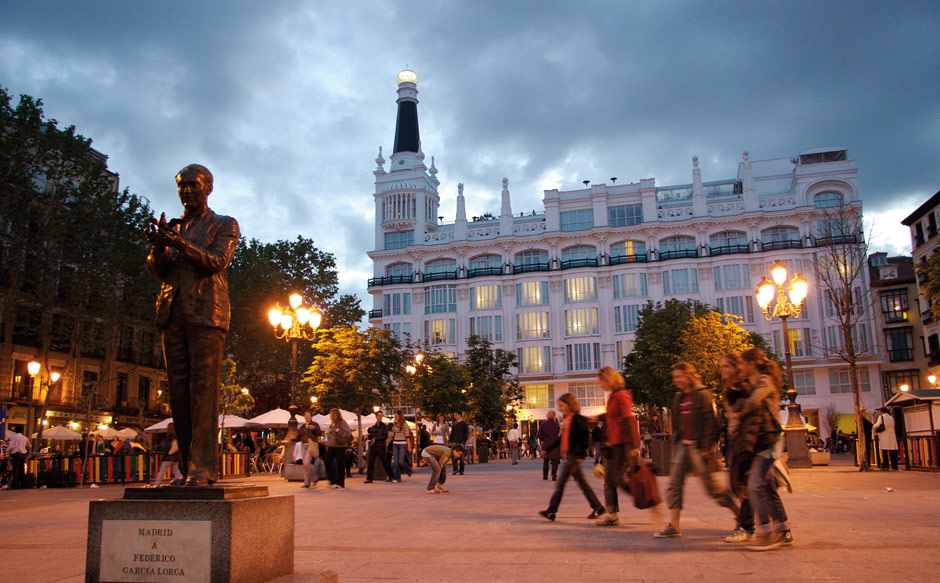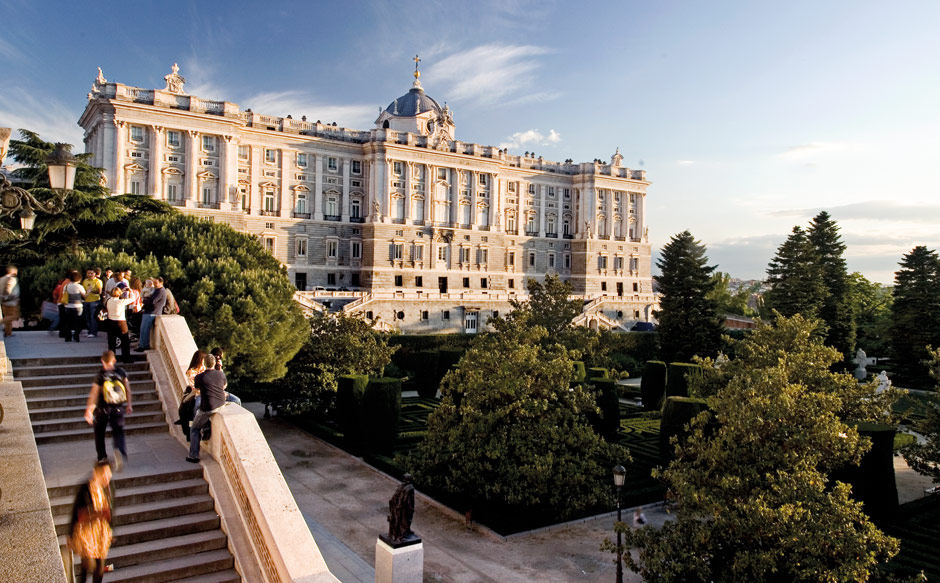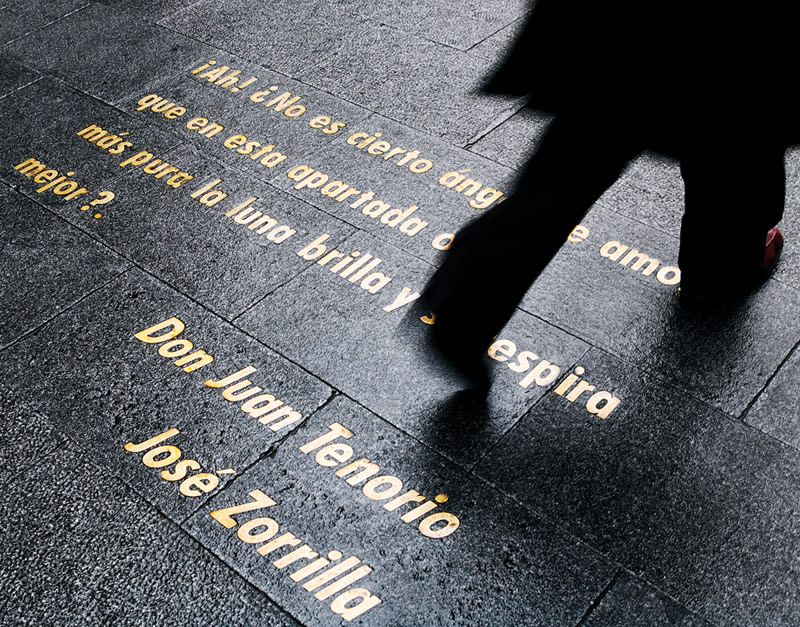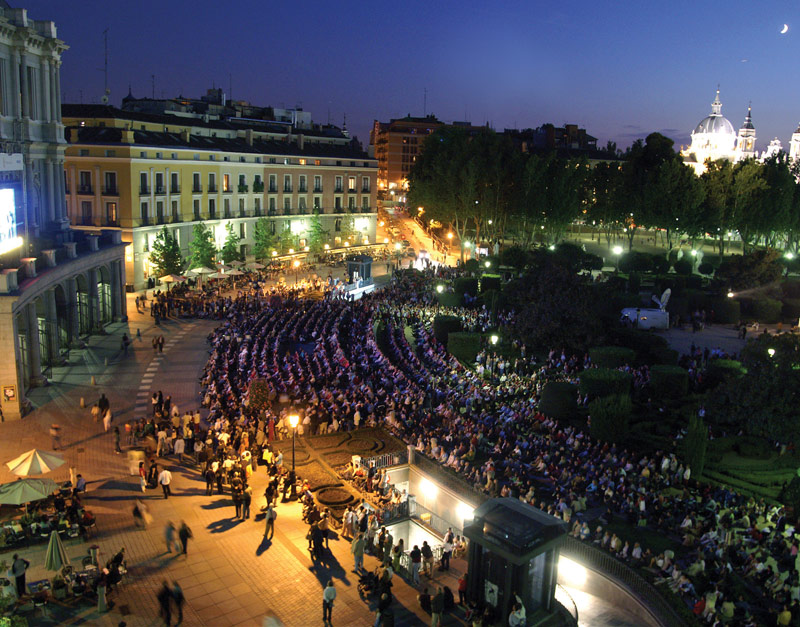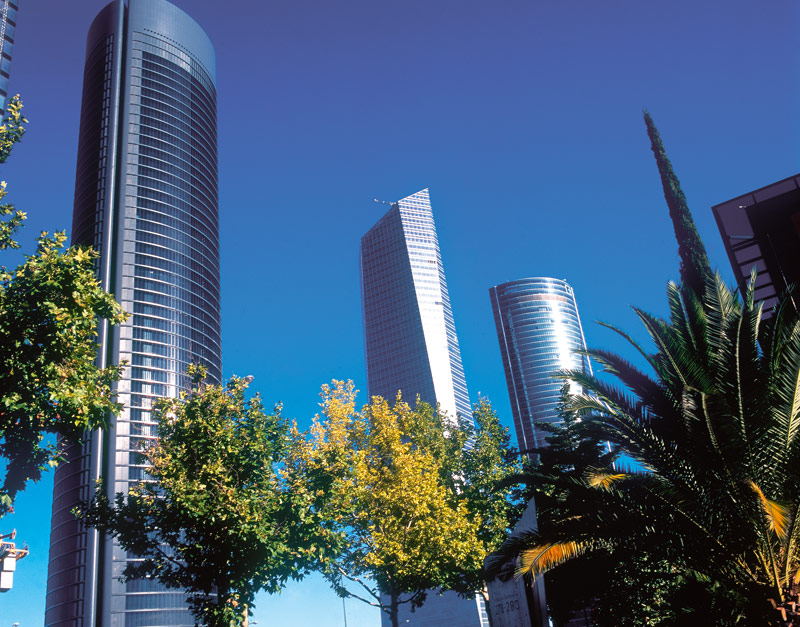Big cities are like books. They have a cover, their credits pages. They have chapters, and hidden pages where dried flowers and mementos are kept. They are simultaneously visible and invisible. And this is true of Madrid.
When you arrive —especially if you do so on the AVE, or high-speed train— Madrid appears suddenly. In the midst of an arid plain, the blocks of flats and skyscrapers rise up, the profile of the city as though it were a fata morgana in the desert. Seeing it emerge so suddenly produces a strange emotion. From afar, Madrid looks like a chimera.
It is difficult to define a big capital city like Madrid. I am struck immediately by some things. The first is the difference in scale. In Madrid, everything seems to be much bigger. Gigantic buildings, landmarks, topped by statues of charioteers or angels. Calle de Alcalá and Gran Vía are full of them. The avenues are so wide you would think it impossible to cross them on foot, such is the torrent of cars and the distance from one side to the other. It is an authentic megacity. A setting of nocturnal lights and enormous cinema billboards.
You also quickly pick up on the diverse pattern of human relations. In Madrid, you always wind up chatting to the taxi drivers and waiters. It’s very easy to talk to the people here, and they in turn are friendly and relaxed. The variety of people, accents and skin colours is broad indeed. Nobody is surprised by anything. And you feel comfortable from the very beginning. It is the chimera of the universal capital.
If you like books, Madrid is also the cradle of the great literary cafés. For gatherings, or melancholic afternoons looking at the streets. I never miss a chance to go to La Pecera at the Círculo de Bellas Artes. There you are reminded of one of Camilo José Cela’s stories as you contemplate the paintings on the ceiling. And on the other side of the panes of glass, the city turns into the literary chimera of bygone times. And that is extremely valuable. Going to the alleyway of San Ginés to encounter the silhouette of Valle-Inclán, next to the people having hot chocolate with churros. Entering the National Library, an authentic temple of culture. Visiting the Ateneo or age-old bookshops like Pérez Galdós. Strolling along Cuesta de Moyano with its second-hand book stalls. It’s so easy to feel as though you are inside Fortunata y Jacinta in any corner of the city...
The old Madrid of wines and drinks is still there. On a corner of Calle San Joaquín, you can see an image of Humphrey Bogart with an inscription: “We’ll always have Malasaña”. Because this neighbourhood beckons one to take nighttime strolls, amidst a diverse range of bars, restaurants, curious shops; there is even a hairdresser who has two guitars on display in his salon, as though to invite his clientele to the concert. The old Madrid of the taverns and pimps has been turned into a network of designer premises, distributed around places like Chueca, Lavapiés or the Huertas area, amongst many more.
If there is one thing that will surprise you in Madrid, it is sitting in the epicentre of history, be it current or distant. The city is full of statues of kings, writers, jurists and warriors. Many houses still have plaques commemorating some illustrious figure or other who lived in them. Now-legendary episodes, like 2nd May 1808, are easily evoked. And at the same time, you pass by the Congress of Deputies and see the figures and scenes that are shown on the news every day. You can hardly believe they are real, within touching distance. It’s as though you were wandering around the inside of a newsreel.
Madrid is a city of gardens and museums. And this makes it particularly etheric, spiritual, suggestive. The famous Retiro, with its golden leaves when autumn comes, the Botanical Garden. And very nearby, the wonderful museum of the Prado, where you could spend several days in a row discovering masterpieces. And visit the Thyssen, or the Reina Sofía another day. Or have a face-to-face debate with the Dama de Elche in the National Archaeological Museum.
I never fail to take a walk around the Salamanca neighbourhood. All those harmonious, tree-lined streets, with elegant shops. I particularly enjoy peeking into windows here. Looking inside the houses, which offer up images of warmth and mystery in winter. With their curtains, their paintings, their office lights. And the entrance lobbies. Because Madrid is the Mecca of lobbies: enormous, stately, Baroque or Neo-Classical. Silent and gloomy.
And there is yet more to choose from: the futuristic Madrid of the skyscrapers, the palatial Madrid, the Madrid of opera and theatre, the Madrid of shops....Every Madrid has its chimera. Like an impossible city that encompasses many cities.
Tourism
Madrid is a great capital of tourism. Groups of all nationalities circulate around Puerta del Sol in search of that proverbial charm of the city of “Los Austrias”. Personally, I don’t mind at all. I like mingling with that ephemeral population, who admire and photograph everything. The unmissable attractions are naturally the spectacular Plaza Mayor, the area around Palacio de Oriente with its magnificent views, the Rastro... Madrid has managed to prevent this influx of visitors from detracting from its character, a truly admirable feat. Tourism seems to reinforce its personality even more, helping consolidate it in the midst of so much change and cosmopolitism. Tourists find their chimera in Madrid, too. And it is elegant, historical and learned.
Live music
For lovers of live music, Madrid is paradise. There is a deep-rooted culture of musical cafés here. People sit down, drink their glass of wine, listen, applaud. There is a visible respect for the artist, a pleasure in taking in the details of the live performance. Silence, and applause in proportion. Madrid has very well-known concert halls, such as Joy Eslava or Galileo Galilei. But above all it has an abundance of small and medium-sized cafés, with their clientele and their own style. La Coquette with blues, Populart with jazz, Soul Station, Boca del Lobo... Personally, I love Libertad 8. It is a tiny space, where you can practically feel the heat from the singer’s body. It has a very Parisian flavour to it. Drinking a beer and eating popcorn, you forget the outside world. As though the music and the song were what is real.
Barcelona, 1950. A writer, journalist and disseminator. He has published fifty books centred on the ancient world, archaeology and testimonies. In the realm of testimonies, the book Te lo contaré en un viaje (2002) occupies a central position.
In it he tells the story of his daughter, Alba. Other books in the same series are La memoria de las olas (2010), La estrella fenicia, memorias taumatúrgicas (2014) and La gente bella no surge de la nada (2016).
Since 2011, he has been directing educational shows on history and heritage which include theatre, music and lighting. This facet gave rise to the creation of the company Carlos Garrido Escènic.


